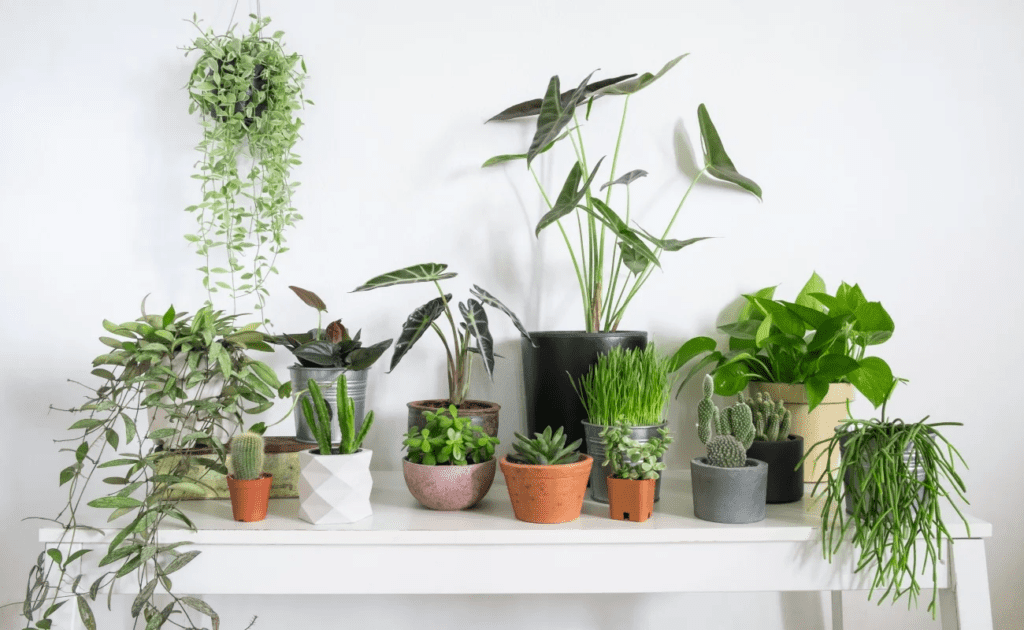What are an ornamental plants? Are you looking to spruce up your garden or yard with some colorful plants?
Ornaments can be a great way of adding life and vibrancy to an area. But what are ornamental plants and how do they differ from other kinds of plants?

Ornamental plants have been used in gardens for centuries, and their popularity continues to increase as people strive for that perfect outdoor aesthetic.
Ornamental plants are not just restricted to flowers, but also come in various sizes and shapes like shrubs, trees, ivy, cacti, grasses, vines, and succulents.
An ornamental plant is a type of horticultural plant that has been cultivated for its aesthetic beauty.
They can bring color, texture and form to any landscape and their looks can help reduce stress levels through natural beauty.
This article will discuss what ornamental plants are and some tips on how you should use them in landscaping your garden or yard.
Key Takeaways
- Ornamental plants are cultivated for their aesthetic beauty, and they come in various shapes and sizes, such as trees, shrubs, ivy, cacti, vines, grasses, and succulents.
- Ornamental plants can add life, vibrancy, texture, and form to any landscape, indoors or outdoors. They can also provide pleasant scents or attract wildlife.
- Selecting an ornamental plant requires considering the climate and soil conditions of the planting area to ensure its success.
- Some popular types of ornamental plants include flowering shrubs, trees, vines, grasses, succulents, and cacti.
- Growing ornamental plants can have benefits such as reducing stress levels, increasing property values, and providing a source of enjoyment for the gardener.
What are an Ornamental Plants?
Ornamental plants are plants that have been cultivated for their aesthetic beauty. They can be used to add color, texture and form to any landscape.
Ornamental plants come in a variety of shapes and sizes, including shrubs, trees, ivy, cacti, grasses, vines and succulents.
These plants can be grown both indoors and outdoors and can provide a great way to add life and vibrancy to any area.

Ornamental plants are usually chosen for their visual appeal, but they can also be used to provide a pleasant scent or attract wildlife. Some ornamental plants may even have medicinal properties or be edible.
When selecting an ornamental plant, it is important to consider the climate and soil conditions of the area where it will be planted in order to ensure its success.
Types of Ornamental Plants
There are many different types of ornamental plants that can be used in landscaping. Some popular choices include:
• Flowering shrubs – These plants produce colorful flowers and come in a variety of shapes and sizes.
• Trees – Trees can provide shade and structure to any landscape.
• Vines – Vines can be used to create a beautiful, cascading effect in any garden or yard.
• Grasses – Ornamental grasses can add texture and movement to a landscape.
• Succulents – These plants are low-maintenance and come in a variety of shapes and colors.
• Cacti – Cacti are drought-tolerant and can be used to create an interesting focal point in any garden or yard.
Benefits of Growing Ornamental Plants

Ornamental plants can provide a number of benefits to any landscape. They can:
• Add color and texture to an area
• Provide a pleasant scent
• Attract wildlife
• Reduce stress levels through natural beauty
• Increase property value
In addition, ornamental plants are relatively low-maintenance and can be grown both indoors and outdoors.
Tips for Growing and Caring for Ornamental Plants
When growing ornamental plants, it is important to consider the climate and soil conditions of the area where they will be planted.
It is also important to choose plants that are suited to the environment and provide adequate drainage.

When caring for ornamental plants, it is important to water them regularly and fertilize them as needed.
Pruning may also be necessary in order to keep the plants healthy and looking their best.
Additionally, it is important to check for pests and diseases regularly in order to ensure the health of the plants.
Conclusion
Ornamental plants can be a great way to add color, texture and form to any landscape. They can also provide a pleasant scent and attract wildlife.
When selecting and caring for ornamental plants, it is important to consider the climate and soil conditions of the area where they will be planted in order to ensure their success.
With proper care, ornamental plants can bring life and vibrancy to any area.